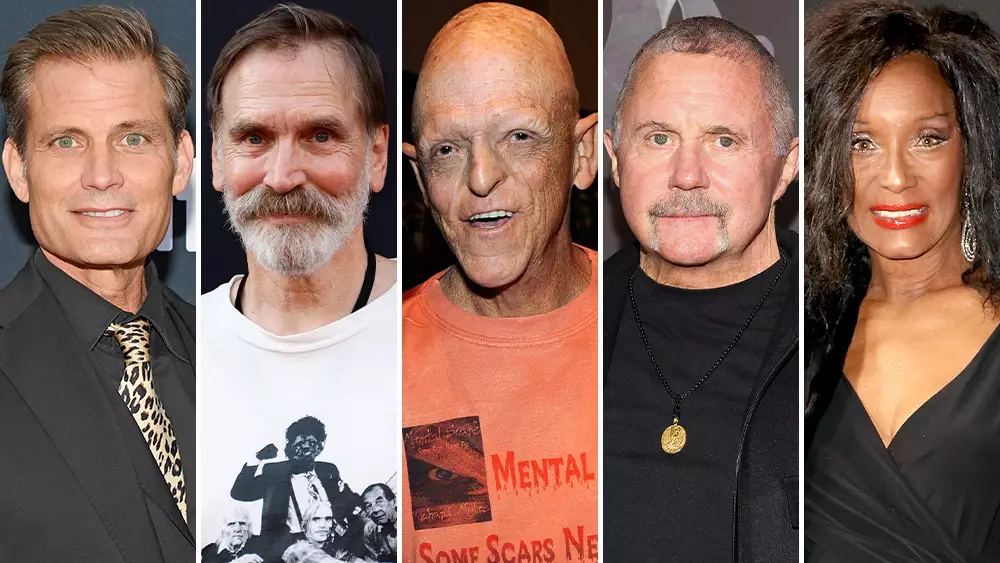The upcoming production of “Spawn of the Living Dead” signals a daring revival of the zombie genre, blending reverence for foundational horror works with innovative storytelling. Crafted by John A. Russo, co-creator of the iconic “Night of the Living Dead,” this project promises to tap into the raw, visceral energy that made the original a cornerstone of horror cinema. By assembling a cast that boasts genre legends like Kane Hodder, Bill Moseley, and Michael Berryman, the producers are emphasizing a respect for the roots while aiming to inject fresh vitality into the zombie mythos. This approach underscores not only an homage to the genre’s history but also a strategic move to attract dedicated horror aficionados eager for authenticity and nostalgia.
The narrative’s premise—centering around the final days of a 1968 zombie plague—resonates with thematic depth. It revisits the archetypal struggle between human resilience and grotesque survival, capturing the chaos as communities attempt to eradicate the undead menace. The inclusion of scientists experimenting on zombies suggests a story that may explore moral ambiguities and the nature of scientific curiosity. This nuanced approach invites viewers to ponder questions about humanity’s intervention in nature, morality, and the potential consequences of unchecked scientific pursuits.
Innovative Creatures and Atmospheric Tension Set the Stage
Complementing the zombie narrative is “Organism 46-B The Unseen,” set against the eerily silent backdrop of Antarctica. This film adopts a creature feature mentality, with a shape-shifting predator lurking beneath the ice, capable of controlling minds and mimicking its prey. The setting—one of isolation and extreme cold—serves as a perfect canvas for psychological horror and paranoia. The premise cleverly taps into primal fears: the unknown, betrayal, and the terror of being hunted by an entity that blurs the line between living and non-living. Such themes are timeless, but their execution in this icy environment could set a new standard for creature horror, emphasizing atmosphere and psychological suspense over violence alone.
Both projects reflect a conscious effort by the filmmakers to utilize setting and creature design to elevate horror beyond simple scares, aiming instead for a more immersive experience. The Antarctic monster, crafted by veteran FX artist Todd Masters, promises a visually striking and terrifying addition to the genre’s best creature features. Meanwhile, the zombie sequences, likely emphasizing gore and chaos, will serve as a visceral reminder of humanity’s vulnerability in the face of primitive threats.
Visionary Leadership and Independent Spirit Drive the Projects Forward
Behind these ambitious projects is Nuala Quinn-Barton, whose focus on independent filmmaking signals confidence in the industry’s shifting landscape. Shooting at Lumostage Studios in Vancouver—favored for its cost-effective, high-quality facilities—demonstrates a strategic move to maximize production value without exorbitant budgets. The decision to shoot both films back-to-back is audacious, suggesting an ambition to create a shared universe or at least a cohesive aesthetic that links these horror stories.
Director Ani Kyd Wolf’s involvement is noteworthy, bringing a fresh perspective to genre filmmaking. As a musician, actor, and director, Wolf’s multifaceted background promises a dynamic approach to storytelling and visual style. Her enthusiasm for the challenge reflects a broader trend: indie filmmakers increasingly taking the reins of genre filmmaking, infusing it with innovative ideas and personal vision. This defies the traditional Hollywood model, signaling a shift toward more diverse and experimental horror cinema.
Furthermore, the casting choices leverage genre credibility, elevating the projects’ appeal. Actors like Bill Moseley and Michael Berryman are not only fan favorites but are also symbolic of a committed horror community. Their participation suggests that these films are designed to satisfy die-hard fans while also appealing to newcomers intrigued by the renewed focus on practical effects and atmospheric storytelling.
Reshaping the Future of Horror, One Bold Step at a Time
Overall, these projects exemplify a critical moment for independent horror filmmakers—one where passion, innovation, and strategic planning can redefine genre conventions. The emphasis on practical effects, innovative storytelling, and atmospheric tension demonstrates a rejection of the over-reliance on CGI and formulaic narratives. Instead, they aim to resurrect the visceral authenticity that made classics like “Night of the Living Dead” resonate across generations.
The decision to spotlight creators’ expertise, harnessing veteran FX artists and preserving practical effects, hints at an understanding that horror’s core appeal lies in its tactile realism. As the industry continues to evolve, these films could serve as a blueprint for future low-budget productions that dare to think big and scare deeply, proving that even in a landscape dominated by blockbuster franchises, quality independent horror still has enormous potential.
